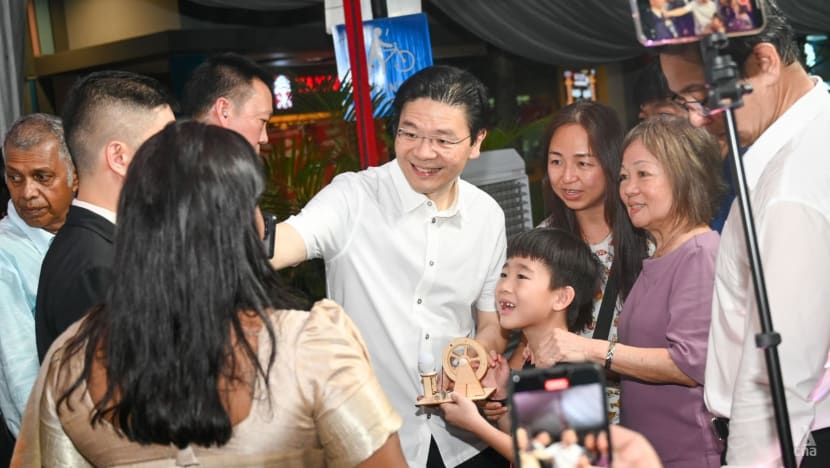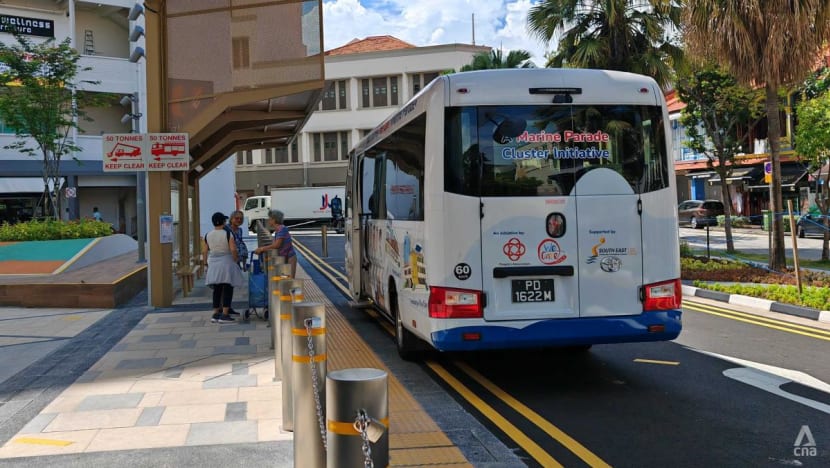West of Singapore expected to see electoral boundary changes due to rise in voters from housing developments: Analysts
Hong Kah North, the only SMC to breach the upper elector limit of 38,000 for single-seat wards, will almost certainly be redrawn or absorbed into a neighbouring GRC, political observers told CNA.


This audio is generated by an AI tool.
SINGAPORE: The west of Singapore is expected to have its electoral boundaries redrawn by the committee currently reviewing constituency lines ahead of this year’s general election, according to political observers.
The Electoral Boundaries Review Committee (EBRC) was convened by Prime Minister Lawrence Wong on Wednesday (Jan 22) to conduct its review ahead of the next electoral contest, which must be held by Nov 23.
Based on the terms of reference for the committee, observers had indicated the possible creation of a new Group Representation Constituency (GRC) and a new Single Member Constituency (SMC).
CNA takes a look at areas on the electoral map where adjustments might happen:
1. Hong Kah North SMC and West Coast GRC
Hong Kah North is currently the only SMC across the island that has breached the upper elector limit of 38,000 for single-seat wards, with its voter population of 38,929.
Its 65.5 per cent increase in voters was driven by new Housing Board flats in Tengah.
The ward has been represented by Dr Amy Khor, senior minister of state for sustainability and the environment and for transport, since 2001.
Hong Kah North SMC neighbours West Coast GRC and Chua Chu Kang GRC.
“The west coast of Singapore will definitely see some major shifts. Some of the constituencies have seen an increase in the voter base, with the inclusion of new estates such as Tengah,” said independent observer Felix Tan, who has written about Singapore’s political landscape.
“There should not be any surprises then if Hong Kah SMC is absorbed into West Coast GRC,” he said.
Associate Professor Tan Ern Ser, an adjunct principal research fellow at the Institute of Policy Studies (IPS), said the ward could also be absorbed into Chua Chu Kang GRC or even further north into Marsiling-Yew Tee GRC, which is anchored by Prime Minister Lawrence Wong.

It would not be the first time that Hong Kah North was part of a GRC.
The ward was created in 2011 out of a section of Hong Kah GRC, noted IPS research fellow Teo Kay Key.
She said that Hong Kah North SMC is currently managed under the Chua Chu Kang Town Council, so changes there would more likely be linked to Chua Chua Kang than to West Coast.
However, it is also possible that it remains an SMC, with its borders redrawn such that its voter numbers go back to being within the acceptable range, said Dr Teo.
“While the current regulations allow for six-member GRCs, we did not see any in 2020. If that is a trend to be continued, SMCs bordering five-member GRCs would most likely not be absorbed directly into a GRC,” she said.
Keeping SMCs as single seats also ensures administrative continuity after the elections end and town councils have to be set up, she noted.
2. Potong Pasir SMC
Potong Pasir SMC saw the largest increase in voters from the last general election, with a surge of 68.6 per cent, driven by residents from new housing developments in Bidadari.
The ward has been represented by Mr Sitoh Yih Pin of the People’s Action Party (PAP) since 2011.
Observers said a part of its 31,268 voter pool could be carved out and merged with an existing neighbouring GRC, such as Bishan-Toa Payoh or Jalan Besar, both of which have balanced voter numbers.
“This will also not make too drastic changes across the board, especially in those areas such as Marine Parade GRC and MacPherson SMC,” said Dr Tan.
Changes would likely not involve the cluster of Marine Parade GRC, MacPherson SMC and Mountbatten SMC, which already have ongoing consolidated efforts to serve constituents, said observers.
For instance, a free shuttle bus service for residents in the three constituencies was launched in July last year, bringing them to amenities like polyclinics, hawker centres and MRT stations. The images of the area's MPs are emblazoned on the sides of the buses plying the service’s routes.

3. Pasir Ris-Punggol GRC and Punggol West SMC
Pasir Ris-Punggol GRC is nearing the upper limit for five-MP wards – 190,000 voters – with 180,319 electors currently.
“This area is likely to see some redrawing of boundaries given the demographic changes,” said Dr Teo.
There is a possibility of one or two SMCs being created in Pasir Ris-Punggol GRC, but the constituency will remain largely intact overall, said political observer and former PAP MP Inderjit Singh.
The constituency was redrawn in the last election, when the new Punggol West SMC and part of the new four-member Sengkang GRC were carved out from it.
Punggol West SMC currently has 26,769 voters, which Dr Teo noted “is well within the voter ratio limit”.
“So one possibility would be to see some redrawing of borders here for the SMC to be expanded,” she said of the ward, which is currently represented by Minister of State for Home Affairs and for Social and Family Development Sun Xueling.
Another would be the creation of a separate GRC in that area altogether, observers said.
One challenge whenever new GRCs are created, is the need for parties to find suitable team leaders, or anchor ministers in the case of the ruling party, said Dr Tan.
4. Yuhua SMC and Jurong GRC
Among the single seats, Yuhua SMC is the smallest with 20,362 voters, just above the lower limit of 20,000.
“With regards to Yuhua SMC, it might be absorbed into the Jurong GRC,” said Dr Tan.
The ward, which has been held by Minister for Sustainability and the Environment Grace Fu since 2011, is mostly bounded by Jurong GRC.
Currently, Yuhua SMC, Bukit Batok SMC and Jurong GRC are all managed under the Jurong-Clementi Town Council.
Dr Tan added that there might also be some changes seen in the constituency lines for Bukit Batok SMC.
“However, I don’t think that the EBRC might want to make huge and major changes when deliberating on redrawing the electoral lines, unless there is a real need to do so,” he said.
“The EBRC might also not want their decisions to end up affecting eligible voters across Singapore.”
















